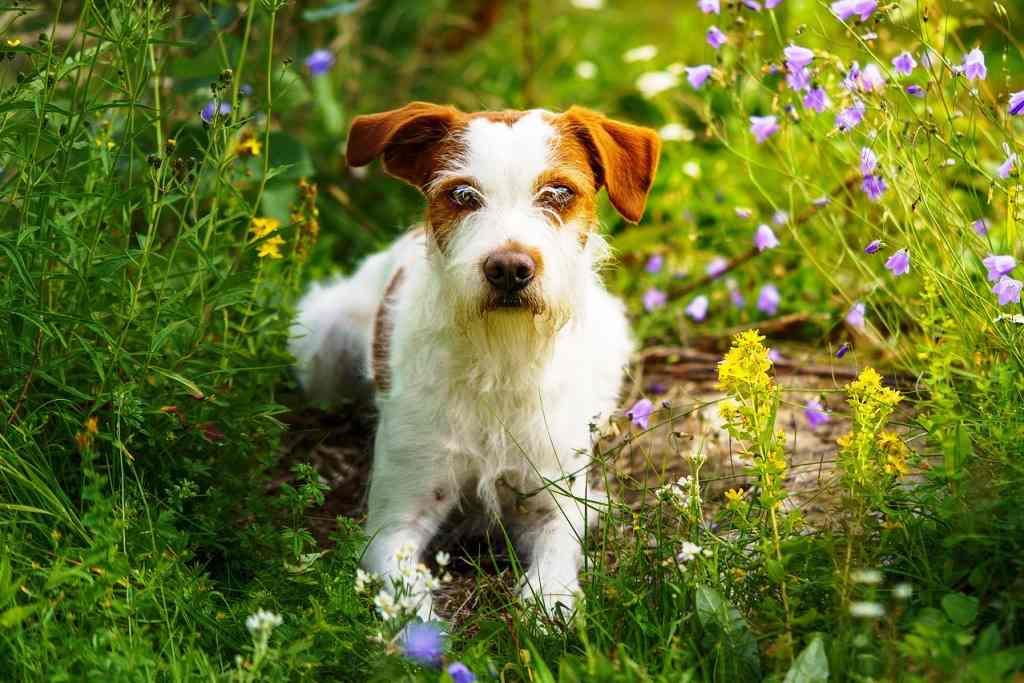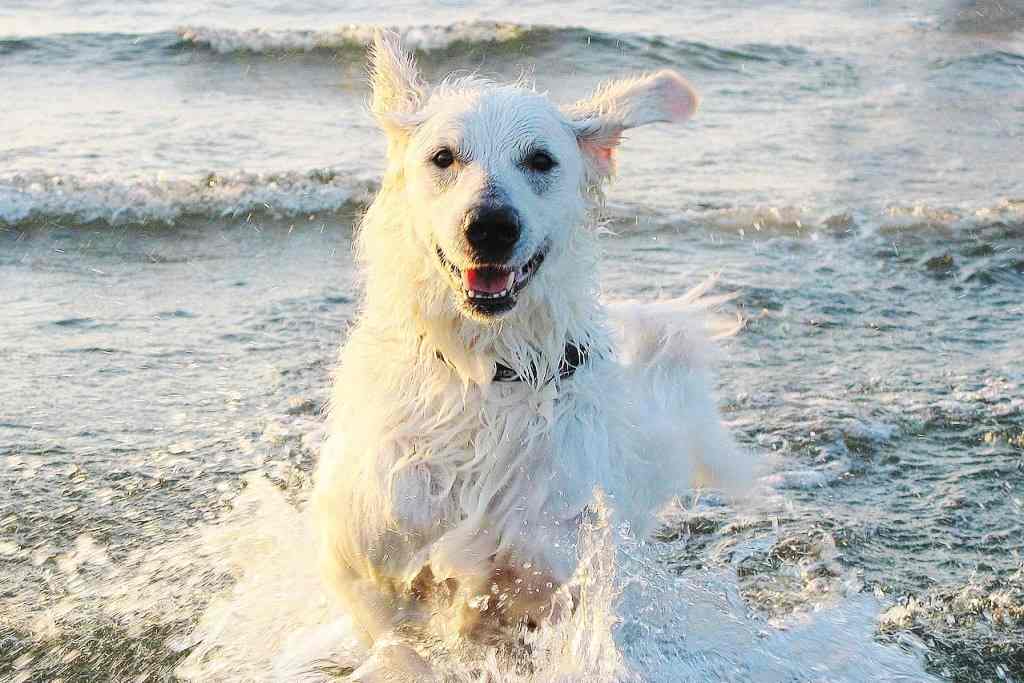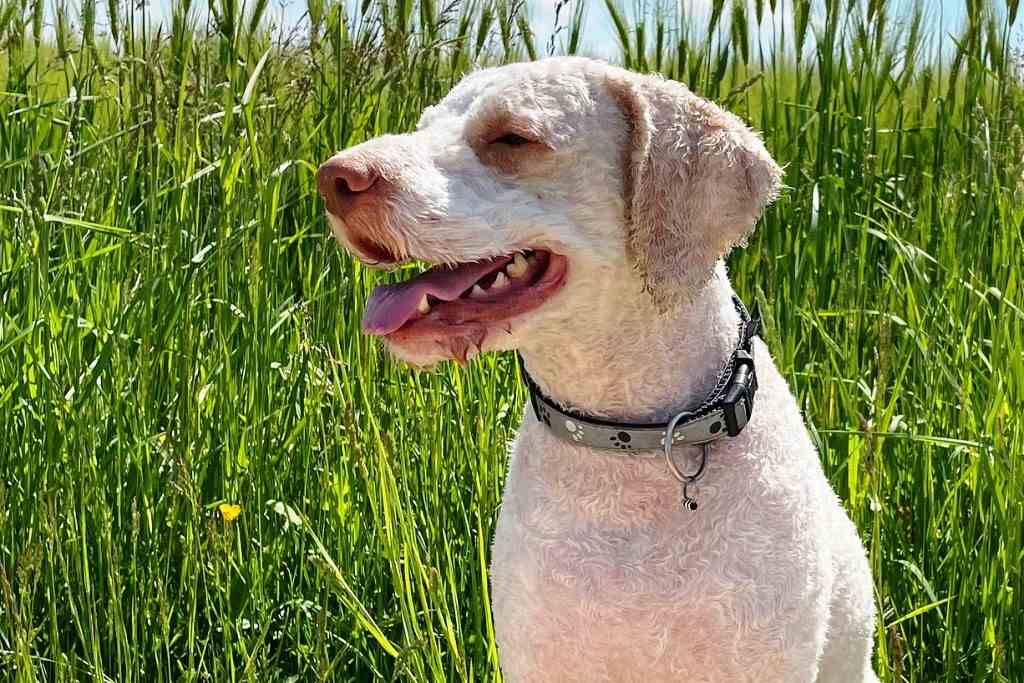The birth of the Kromfohrlander dog breed is fairly recent and is very well documented. It was a German lady dog breeder who created it in 1945 from a French griffon vendeen and a German fox terrier dog. Her name was Ilse Scheifenbaum and she lived in the Siegen region of North Rhine-Westphalia. The breed got its name from the nearby district Krom Fohr, which in modern German means winding furrow. From its ancestors it inherited temperament and character.
The breeder’s aim was to create a medium-sized, loyal, docile and easy-to-care-for breed; in fact, at that time at the end of the war and post-war period in Germany only such a dog had any chance of survival.
It was officially recognised as a breed in 1955, and is probably the last dog breed created in Germany.
Character of the Kromfohrlander dog breed
As already mentioned, its character is very affectionate, cheerful, docile and intelligent, very good at guarding. It is very easy to train because it learns very easily. It has an innate sense of protection towards the people it loves, it immediately becomes attached and is particularly suited to being with children and also with other animals.
It lives quietly in a flat and adapts very well to family life. With strangers it is rather wary and reserved. It loves wide open spaces and long walks. It is by no means a hunting dog, although it does need to spend time in the open air.
It does not like to be touched by strangers. In the family, it is a cuddly dog that does not like loneliness and is not capable of spending too much time alone.
Appearance of the Kromfohrlander dog breed
The Kromfohrlander is a medium-sized dog. The male at the withers measures 38 to 46 centimetres and weighs between 11 and 16 kilograms, the female usually a little less. Its body is well-proportioned and not at all slender, but is not excessive in girth or muscle development.
It has good momentum of the forequarters and good drive of the hindquarters; its gait is loose, active, regular and relaxed. The tail is sabre-shaped, sometimes slightly coiled. At rest the tail hangs down with a slight curve at the end. In action it is carried in a sickle shape on its back. It is a dog that loves to jump.
The head is round and proportioned, the stop is pronounced, the muzzle is straight and slightly refined at the end. The truffle is medium and open, black or brown in colour. The eyes are large and oval, oblique and wide apart, brown in different shades.
There are two varieties of this breed because of its coat: rough-coated and smooth-coated. The standard and size are the same. Rough-coated specimens have a thick, rough texture with the characteristic stubble.
The hair on the back and on the front and back limbs is harder than on the sides, while it is longer on the muzzle. On the ears the hair is in harmony with the coat.
Smooth-coated dogs have a thick, soft texture and no beard. In general, the hair is close to the body, but on the ears, the lower part of the neck and on the chest the hair is longer. The tail has a good plume and there are fringes on the back of the forelegs and on the thighs.
The colour of the coat has a white base, with patches ranging from light brown to fire brown to very dark brown. The patches may vary in size, and if the specimen has a brown undercoat, the tips of the hairs may be black.
Spots may also be present on the head. There is usually a white list on the forehead that divides the head symmetrically.
Care and health of the Kromfohrlander dog breed
This breed generally enjoys good health, and is rarely affected by genetic diseases. It may be prone to mild forms of epilepsy or cataracts in the eyes. But it is a very robust breed and rarely falls ill.
It bears little heat or cold, being a breed that prefers to live indoors.
With regard to diet, dry food is not recommended for this breed, as these dogs tend to drink very little, and by eating dry, they absorb even less liquid.
With regard to coat care, one must divide smooth-haired ones from rough-haired ones. For the smooth-haired ones, it is enough to brush it from time to time, a little more during the moult, as it loses a lot of hair. This type of coat changes its coat twice a year.
The rough-coated dog requires more care. They never change their coat, so it grows and after a few months reaches its final length and must be cut. Bathing for both types should only be done in exceptional cases. Its coat is self-cleaning, i.e. dirt falls out of the dog’s coat by itself. One can also simply brush the dirt off the dog’s coat.


